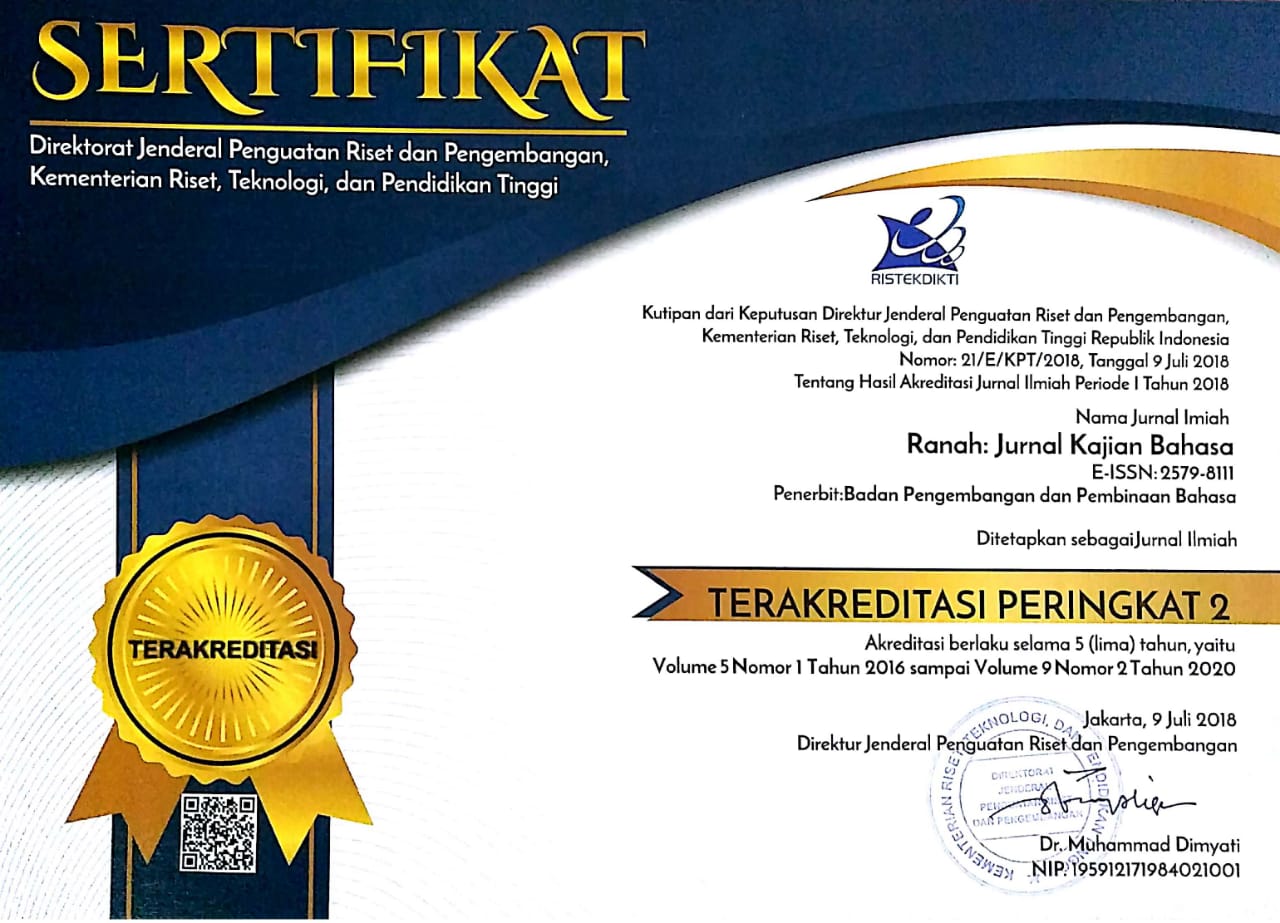SITI: Javanese’s Beliefs as the Representation of Gender Roles and Inequalities towards Women’s Position
Abstract
ABSTRACT
Being males and females is biologically constructed since human beings were born. Meanwhile, there is also strict distinction done by society to divide people into men and women or usually called as doing gender stereotype. It effects on different assumptions that are attached to them. As the result, people are categorized based on their own gender roles in society. Java, as the symbol of patriarchal society, is the ethnic which agrees with this social phenomenon. Its beliefs symbolize how men and women have different social status. It also results in different gender roles. SITI is the film which deals with this phenomenon. It shows that being “obedient” Javanese women will give effect on social status towards different genders. The theories of sex and gender and also patriarchal society were used to get the reliable data.
Keywords: SITI, Sex and Gender, Inequality, Javanese’s beliefs
ABSTRAK
Menjadi pria dan wanita secara biologis dibangun sejak manusia dilahirkan. Sementara itu, ada juga perbedaan mendalam yang masyarakat lakukan untuk membagi manusia menjadi pria dan wanita atau biasa disebut sebagai stereotip di gender. Hal ini berpengaruh pada perbedaan asumsi yang melekat padanya. Sebagai akibat, manusia dikategorikan berdasarkan peran gender mereka sendiri di masyarakat. Jawa, sebagai simbol masyarakat patriarkal, adalah etnis yang setuju dengan fenomena sosial ini. Kepercayaan yang ada pada masyarakat Jawa melambangkan bagaimana pria dan wanita memiliki status sosial yang berbeda. Hal ini juga menghasilkan peran gender yang berbeda. SITI adalah film yang merepresentasikan fenomena ini. Film ini menunjukkan bahwa sebagai perempuan Jawa yang “taat” akan memberikan efek pada status sosial dari gender yang berbeda. Teori seks dan gender serta masyarakat patriarki digunakan untuk mendapatkan data yang sesuai.
Kata Kunci: SITI, Teori seks dan gender, Ketidaksetaraan, Kepercayaan Jawa
Keywords
Full Text:
PDFReferences
Butler, Judith. Bodies that Matter: On the Discursive Limits of “Sex”. New York: Routledge, 1993.
Butler, Judith. Gender Trouble: Feminism and the Subversion of Identity. New York and London: Routledge, 1990.
Davies, Alan and Catherine Elder. The Handbook of Applied Linguistics. Malden: Blackwell Publishing Ltd, 2004.
Eckert, Penelope and Sally McConnell-Ginet. Language and Gender. Cambridge: Cambridge University Press, 2003.
Goldberg, S. (1973). The inevitability of patriarchy. New York: Morrow.
Nelson, Todd D. Handbook of Prejudice, Stereotyping, and Discrimination. New York: Psychology Press Taylor & Francis Group, 2009.
Salem Press. Sociology Reference Guide: Gender Roles and Equality. Pasadena, California: Hackensack, New Jersey, 2011.
Spender, Dale. Man Made Language. London: Routledge & Kegan Paul, 1980.
Walby, Sylvia. 1990. Theorizing Patriarchy. Oxford: Blackwell
West, Cancade and Zimmerman, Don H., Doing Gender. “Gender and Society”. In JSTOR. Vol. 1, No. 2 (June 1987): pp. 125-151.
DOI: https://doi.org/10.26499/jentera.v9i2.1358
Refbacks
- There are currently no refbacks.






















